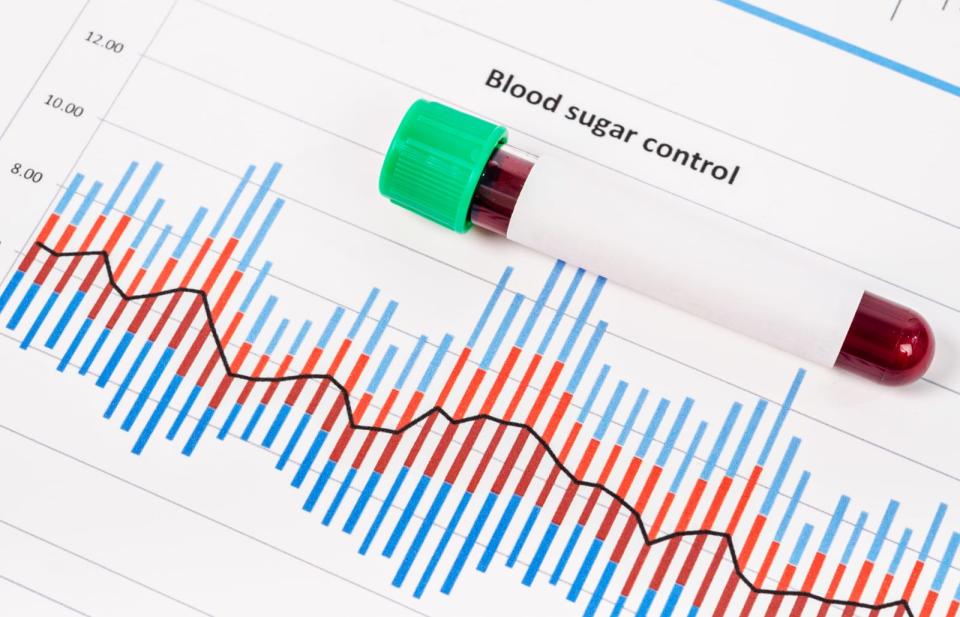AI could be the key to catching Type 1 diabetes much earlier
IBM's latest project could help identify patients at risk and help chart a course for tracking the condition.
Will AI lead to a quicker diagnosis of diabetes, a condition often called the silent killer? IBM researchers are hoping so. They recently announced an AI-powered screening tool that could potentially identify Type 1 diabetes antibodies in people's blood.
For the millions of people who live with Type 1 diabetes globally, everyday reality involves significant self monitoring. Without that supervision, the pancreas fails to produce enough insulin, which is used to move energy-providing blood sugar to the body's cells. From daily insulin injections to ensuring that blood glucose levels are in check with nutrition and exercise plans, it's a condition that requires patients to stay highly vigilant about their health.
About 1.25 million people have Type 1 diabetes in the United States alone, with an estimated 40,000 new diagnoses each year, according to the American Diabetes Association. Given this, you might be surprised that no standardized screening process for the condition exists to catch it early on. Doctors generally test based on family history and other known risk factors, meaning Type 1 diabetes can appear under the radar. This can lead to sudden trips to the ER and surprise diagnoses, making the development of better screening tests a major life-saving priority for doctors.

Now, here's where AI comes in. At the American Diabetes Association's 79th Scientific Sessions in early June, IBM and JDRF (formerly known as the Juvenile Diabetes Research Foundation), a nonprofit that spearheads Type 1 diabetes research, unveiled a predictive AI tool that has mapped the presence of Type 1 diabetes antibodies in blood to figure out exactly when and how the condition could develop. Jianying Hu, IBM fellow and global science leader of AI for health care at IBM Research, told Engadget that the AI was fed data from more than 22,000 people from the United States, Sweden and Finland.
The program pinpointed similarities among people with specific antibodies for the disease and the timeline of their Type 1 diabetes progression.
"One of the biggest potentials of this kind of work in building machine learning models for Type 1 diabetes is to be able to better identify who to monitor and how often to monitor them," said Hu, whose team worked on this project with JDRF for more than a year. "Right now even the little we know, these antibodies are pervasive in the progression of Type 1 diabetes, but nobody knows who is more susceptible in developing them and when."
She said these AI models could give doctors "a more personalized deadline" for how to monitor people and how often they should be tested.
In the past, Type 1 diabetes was called juvenile diabetes, because it's generally diagnosed in kids, teens and young adults, according to the Centers for Disease Control and Prevention (CDC). However, it can impact people at any age, said Utpal Pajvani, an endocrinologist and assistant professor at Columbia University Medical Center.
Pajvani, who is not affiliated with this project, explained that general practice dictates screening only people who are "high risk." This means they have a first-degree family member who has been diagnosed. Given that it is so uncommon, he said it isn't something that would warrant screening the population at large.
He cautioned that wide-ranging screening methods like this could lead to a lot of false positives.
"If you're screening for a relatively uncommon condition, you're going to end up with a lot of false positives. If you test all people, [including] those who are [at a] relatively low risk of developing it who have an absence of family history or other autoimmune disease, you will have a much higher rate of identifying people who might have a positive test for an antibody but are [at] low risk of having the disease," Pajvani told Engadget.

The risk of applying a broad screening test for a rare disease like this means you could also make people unnecessarily anxious about a condition they are unlikely to get. Essentially, no perfect screening test exists that would be without false positives, he added.
Despite these critiques, Pajvani sees a future for this kind of technology. People who have a high risk for diabetes and have the presence of these antibodies still don't know what the timeline of the progression of the disease will be. This kind of AI tool could give doctors a necessary road map for charting the course of the condition, he explained.
Moving forward, Hu said that her team will soon be adding more data from Germany to be sorted by the AI. She added that another big piece of the project is working closely with physicians to see how they can apply this and how the insights gleaned from the AI can be used in clinical studies.
"I do love that people are thinking about this, and I love the idea of carrying forward the important clinical question of who will develop a condition, especially one as significant as Type 1 diabetes," Pajvani added. "Hopefully, [I'd] like to see us in a place where technology can provide a greater understanding of how we help people."
Pajvani said that as a clinician, he has yet to see AI move out of the theoretical and into the practical day to day of treating patients. For her part, Hu said that she thinks the presence of machine learning in medicine will only continue to "accelerate" and that it's "extremely important" work that could lead to indispensable tools for doctors.
This AI doesn't provide a definitive screening method today, but it offers a path for how machine learning tools could be used for faster, life-saving Type 1 diabetes diagnoses in the future.



